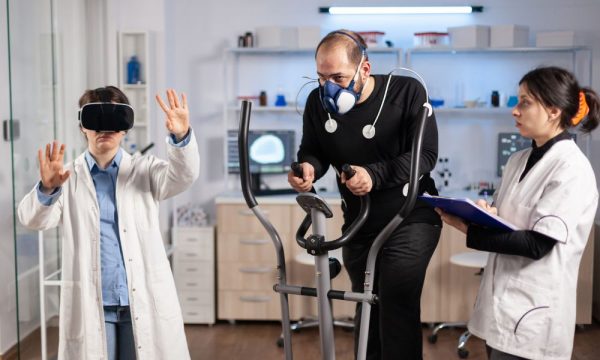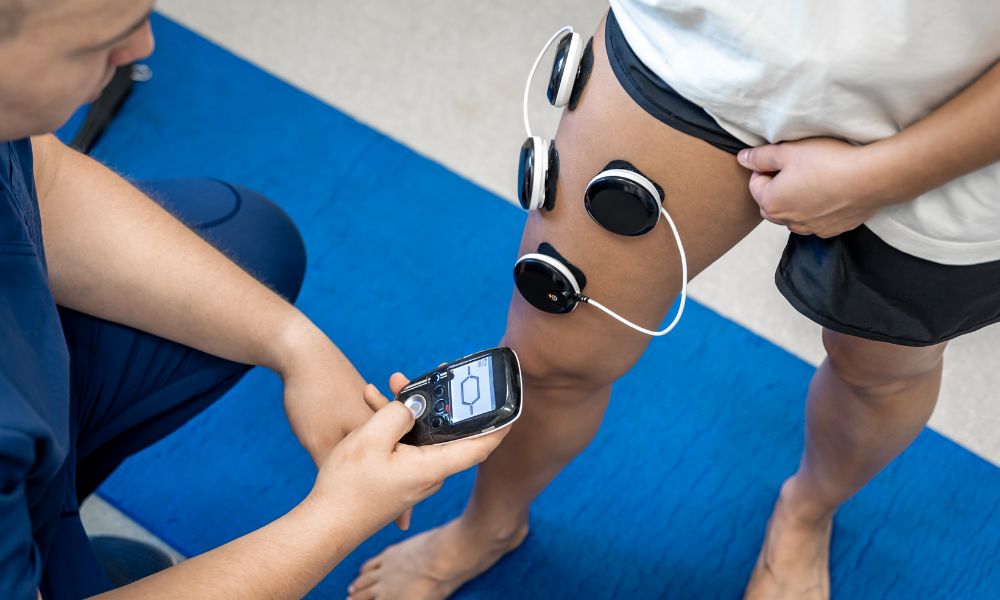In recent years, wearable rehabilitation tech has emerged as a powerful tool in the world of physical recovery and injury treatment. No longer just used for tracking steps or monitoring sleep, wearables are now playing a crucial role in how patients recover from surgery, trauma, and chronic conditions. These devices are changing how clinicians guide therapy and how patients engage with their own healing journey, offering real-time feedback, progress tracking, and personalized support.

From sports injuries to workplace accidents, rehabilitation has traditionally involved repeated clinic visits, manual assessments, and a long trial-and-error process. But with wearable rehabilitation tech, the recovery process becomes smarter, faster, and more interactive. Patients can receive immediate feedback on their movements, clinicians can access accurate performance data remotely, and recovery plans can be adjusted in real-time based on actual progress, not guesswork.
Smarter Healing Through AI and Data
One of the biggest innovations driving this transformation is the integration of AI wearable healthcare systems. These intelligent devices don’t just collect data; they analyze it, learn from it, and provide actionable insights. For example, a wearable can detect abnormal movement patterns during a rehab exercise and alert the user or therapist instantly. This reduces the risk of reinjury and keeps patients on the right track.
AI-driven wearables are also capable of customizing rehabilitation programs based on a user’s unique health profile. By learning from each movement, these systems can adjust exercise intensity, recommend posture corrections, or even signal when to rest. For patients recovering from complex injuries or surgeries, AI wearable healthcare offers an extra layer of support that’s both consistent and clinically valuable.
Touch-Sensitive Feedback: A New Layer of Physical Therapy
Touch-sensitive wearable tech is pushing the boundaries of what’s possible in remote rehabilitation. These devices simulate real-time tactile feedback, helping patients relearn movements and sensations after injury or surgery. Whether it’s regaining grip strength after a wrist injury or retraining balance after a fall, haptic wearables allow patients to “feel” their progress.
This tech is especially valuable for patients dealing with neurological or musculoskeletal challenges, where sensory feedback is often impaired. By delivering vibrations, pressure, or resistance, touch-sensitive wearables can recreate physical cues that would typically require in-person assistance. This means better results from home-based therapy and greater confidence in each movement.
Musculoskeletal Wearable Sensors Make Movement Measurable
Another breakthrough in wearable rehabilitation tech comes from the use of musculoskeletal wearable sensors. These lightweight, flexible devices are worn on joints, muscles, or limbs to track detailed motion data in real time. They can monitor a range of motion, muscle activity, joint angle, and alignment, all essential markers for effective rehabilitation.
Unlike traditional therapy, where movement quality is assessed visually by a clinician, these sensors provide precise data on how well (or poorly) a patient is performing a prescribed activity. This allows therapists to make data-driven decisions, reduce guesswork, and adapt treatment plans with higher accuracy. For patients, it means faster progress and fewer setbacks.
These sensors are now being used in everything from post-op recovery to injury prevention in athletes and even in workplace injury rehabilitation programs.
Recovery Tech for Injuries: Beyond the Clinic
The rise of recovery tech for injuries means rehabilitation doesn’t have to be confined to hospitals or clinics. With wearables that track performance and deliver feedback remotely, patients can now engage in guided therapy at home, at work, or even on the go. This has huge implications for accessibility, especially for individuals in rural or underserved areas.
Patients recovering from surgeries such as ACL repair, rotator cuff injuries, or spinal fusion can now wear a device that not only tracks their activity but also guides them through safe, corrective movements. It also gives therapists real-time access to the patient’s progress, allowing for faster adjustments and better communication.
For industries managing injured workers, this kind of tech streamlines the path from injury to return-to-work. Recovery tech for injuries reduces downtime, supports compliance with treatment plans, and improves outcomes across the board.
The Future of Wearable Rehabilitation Tech
As wearable devices become more advanced, so too will their role in physical therapy and rehabilitation. We’re already seeing the early stages of systems that integrate multiple technologies, combining AI wearable healthcare, musculoskeletal wearable sensors, and touch-sensitive wearable tech into a single platform. These “rehab ecosystems” may soon guide entire recovery programs, tailored to each individual’s needs and updated in real time.

Future developments will likely focus on even smaller, more accurate sensors, improved battery life, and deeper integration with telemedicine platforms. The goal is simple: empower patients to recover faster, more safely, and with greater independence.
For clinicians, this means access to more precise tools for diagnosis and treatment. For patients, it means a smoother recovery journey that feels less clinical and more personal.
A New Era of Recovery Begins
Wearable rehabilitation tech is more than a trend; it’s a shift in how we approach injury recovery. With the help of AI, real-time data, and sensory feedback, wearables are closing the gap between clinic and home, professional guidance and personal empowerment. This tech enables patients to take an active role in their recovery while providing clinicians with the insights needed to deliver better care.
As adoption grows and technology improves, we’ll likely see wearable rehabilitation tech become a standard part of treatment, not just a premium option. Whether it’s through a smart knee brace, a haptic glove, or a stretchable movement sensor, the path to recovery is getting clearer, faster, and more effective with every step.


No Comments